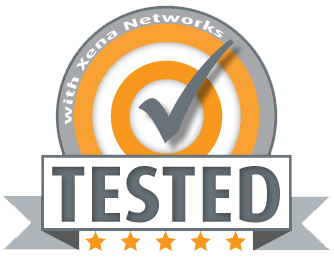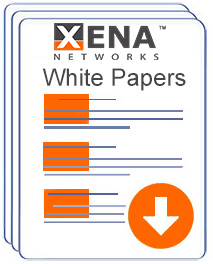Automotive Ethernet Testing
Xena Menu
Ethernet Test Tools
theAutomotive Ethernet Testing from Xena Networks
The automotive industry is evolving rapidly. The newest models have features that represent unparalleled innovation – cars that can communicate with each other, the road-side infrastructure, the Internet, plus highly advanced in-car infotainment systems. Cars are also being equipped with sensor-based safety systems that can dramatically improve traffic safety by virtually eliminating crashes. And we are nearing a point where fully automated vehicles that can handle all driving tasks will soon be commercially available.
Most of these new features and applications rely on bandwidth hungry electronics which require costly and complex cabling. This is a key factor increasing the price and weight of the cars. To counter this, the newly approved BroadR-Reach® 100 Mbit/s Automotive Ethernet specification seeks to optimize in-car cabling, based on 100 Mbit/s Ethernet running over a single unshielded twisted pair copper wire. A network based on the BroadR-Reach specification for in-car communication will significantly reduce both cost and weight of the required cabling.
Testing BroadR-Reach Ethernet equipment is essential for verifying its quality, functionality and performance. Xena test modules with 1Gbps SFP ports like the Z01t Odin 6-port 1Gbps test module equipped with BroadR-Reach 100BASE-T1 and 1000BASE-T1 transceivers provide powerful and versatile automotive Ethernet test capabilities up to Layer 3 including RFC 2544 and RFC 2883 to test and verify BroadR-Reach 100BASE-T1 100 Mbit/s and 1000BASE-T1 1000 Mbit/s automotive Ethernet products.
Introduction
Modern cars are loaded with sophisticated applications and functions that improve traffic safety, fuel consumption and user convenience. These include:
1. In-car applications:
Examples are Advanced Driver Assistance Systems (ADAS) like: Adaptive cruise control (ACC), automatic parking, blind spot monitoring, collision avoidance systems, driver drowsiness detection, hill descent control, lane departure warning systems, lane change assistance, parking sensors, pedestrian protection systems, rain sensors, surround view systems, traffic sign recognition, & wrong-way driving warnings.

Figure 1: Vehicle to X communication (V2X)
2. V2X:
They also cover infotainment systems that require Internet access known as V2X (Vehicle to X where the “X” can by just about any cloud-based communication service).
3. V2V:
Vehicle to Vehicle communication (V2V) covers cars that can communicate with each other.
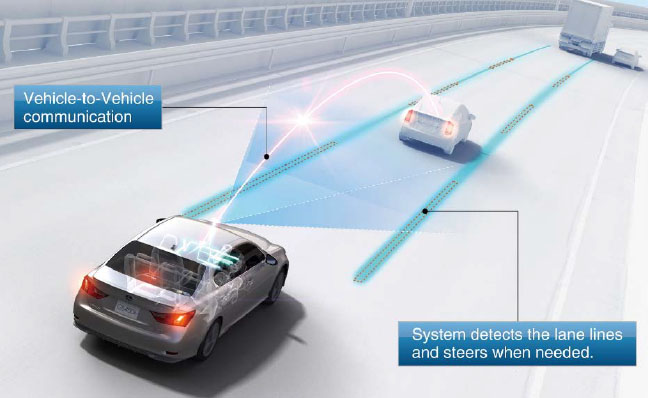
Figure 2: Vehicle to Vehicle Communication (V2V)
In addition to the new features and application also legacy mechanical or hydraulic systems are moving to electronically controlled systems (x by wire). This is implemented with a number of Electronic Control Units (ECUs), which are embedded systems controlling one or more of the electrical system in a car.
All of these electronic systems require a large and complex electrical cabling to the extent where this is now the car’s third heaviest component after the chassis (first) and the engine (second).
BroadR-Reach 100 Mbit/s Automotive Ethernet
The purpose of the BroadR-Reach 100 Mbit/s Automotive Ethernet standard seeks to address this issue – to reduce connectivity costs and cabling weight by allowing multiple in-vehicle systems to simultaneously access information over unshielded single twisted pair cable.
The OPEN Alliance BroadR-Reach (OABR) specification defines a single Twisted Pair 100 Mbit/s interface. OABR will reduce cost and weight of in-car networks as only a single wire pair will be used. Signals are sent bidirectional on the wire pair.
There are other 100 Mbit/s Automotive Ethernet solutions than BroadR-Reach and the development will not stop at this speed. 1 Gigabit Automotive Ethernet will be next step implemented as Reduced Twisted Pair Gigabit Ethernet (RTPGE).
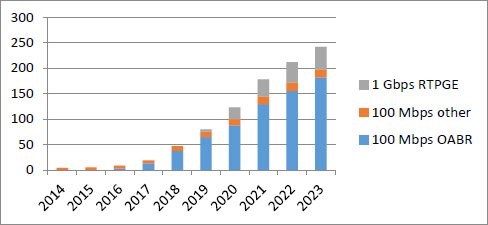
Figure 3: Automotive Ethernet port forecast (number of ports in consumer vehicles produced) Source: Gartner 2014
Legacy Automotive Networks
Automotive networks have been used in cars for many years. Some examples are:
- CAN (Controller Area Network)
- Serial bus, data rates up to 1 Mbit/s
- Shared medium with CSMA/CR
- Widely spread, developed by Robert Bosch GmbH
- Standardized in ISO 11898
- FlexRay
- Serial bus (single or dual channel), data rates up to 10 Mbit/s
- Shared medium with TDMA
- Developed by the FlexRay Consortium
- Designed to be faster and more reliable than CAN – is also more expensive
- Standardized in ISO 10681
- LIN (Local Interconnect Network)
- Serial network with 16 nodes (one master, up to 15 slaves), data rates up to 20 kbit/s
- Lower cost and lower bandwidth than CAN
- Developed by the LIN Consortium
- MOST (Media Oriented Systems Transport)
- Shared ring with up to 64 devices, data rates up to 150 Mbit/s
- For control and streaming infotainment data
- Proprietary solutions
- 100 Mbit/s Ethernet (100Base-TX)
- Diagnostics and firmware upgrades during car service
- Normally not used while cars operate due to EMC issues
- Standardized in ISO 13400-3:2011
- Diagnostics and firmware upgrades during car service
Automotive Ethernet Standardization
Ethernet is today used for all kinds of communication as it is cost effective and relatively simple. When car manufacturers wanted to optimize cost and weight of in-car copper cabling it was obvious to look for a communication solution based on Ethernet. Legacy 100 Mbit/s Ethernet on copper wires (100BASE-TX) was not an option due to EMC issues. Furthermore the goal was to use bi-directional communication over a single balanced twisted pair cable (with a length up to 15 m) – 100BASE-TX uses two twisted pairs.
 In November 2011 the OPEN (One-Pair EtherNet) Alliance Special Interest Group (SIG) (OPEN Alliance SIG) was formed. The following month the Alliance officially released the BroadR-Reach automotive Ethernet specification, which was originally developed by Broadcom. By the end of 2016 the Alliance had more than 300 members including car manufacturers, semiconductor manufacturers and many others.
In November 2011 the OPEN (One-Pair EtherNet) Alliance Special Interest Group (SIG) (OPEN Alliance SIG) was formed. The following month the Alliance officially released the BroadR-Reach automotive Ethernet specification, which was originally developed by Broadcom. By the end of 2016 the Alliance had more than 300 members including car manufacturers, semiconductor manufacturers and many others.
The objectives for the BroadR-Reach specification are:
- Provide a PHY that supports full duplex operation at 100 Mbit/s over one pair unshielded twisted pair (UTP) or better cable.
- Provide compatibility with the MII (IEEE 802.3 Clause 22) and IEEE 802.3 MAC operating at 100 Mb/s.
- Bit Error Rate of less than or equal to 1e-10 over a nominal channel (over a one pair UTP cable).
100BASE-T1 and 1000BASE-T1
The IEEE equivalent to the BroadR-Reach specification was standardized as 100BASE-T1 in IEEE 802.3bw-2015 Clause 96 in October 2015. IEEE has also worked on higher speed Automotive Ethernet in the IEEE P802.3bp 1000BASE-T1 PHY Task Force. The task force defined 1 Gigabit Automotive Ethernet implemented as Reduced Twisted Pair Gigabit Ethernet (RTPGE) and has now completed the IEEE 802.3bp standard for 1 Gigabit/s operation over a single twisted pair copper cable. IEEE 802.3bp was approved June 2016 and is also known as 1000Base-T1.
Protocol Stack
The Ethernet protocol stack is based on the seven-layer OSI model of computer networking.
The BroadR-Reach specification and the 100BASE-T1 standard address Layer 1 of the OSI model which contains the following sublayers:
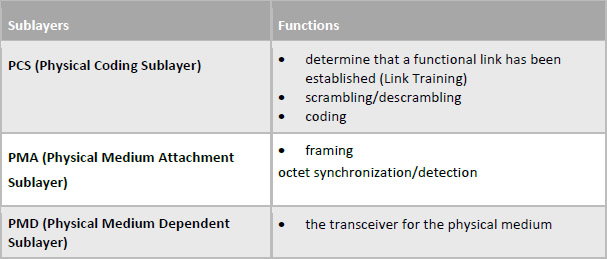
Table 1: Layer 2 sublayers
Auto-negotiation is not used in the BroadR-Reach Layer 1 as the auto-negotiation latency (which could be up to a few seconds) may exceed the start-up time requirements of automotive networks. FORCE mode is used instead.
The BroadR-Reach specification is based on the IEEE Gigabit Ethernet (1000BASE-T) and the Fast Ethernet (100BASE-TX) standards. There are however differences as shown in table 2.
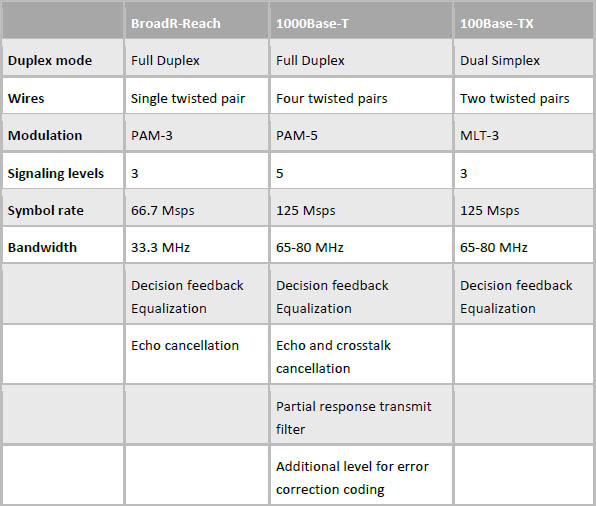
Table 2 Differences between BroadR-Reach, 1000BASE-T and 100BASE-TX
As shown in table 3 the BroadR-Reach bandwidth requirement is less than half the 100BASE-TX bandwidth requirement, which means that BroadR-Reach can operate over cables with lower cost – and quality. In addition the PAM-3 modulation will reduce EMI and allow a more aggressive EMC filtering.
BroadR-Reach Capable Switches
Several vendors offer switches with BroadR-Reach capabilities. Some examples are:
- Broadcom BCM89501 5 integrated BroadR-Reach PHYs + 2 uplink ports
- NXP SJA1105 E 802.3-compliant 5-port automotive Ethernet switch
- TTTech DESwitch Hermes 3/1 BRR with 3 BroadR-Reach physical layer interfaces and 1 x 1 Gbit/s port
Automotive Ethernet Transceivers
Automotive Ethernet Transceivers & Converters
BroadR-Reach (100BASE-T1) transceivers are available from:
- Technica Engineering – 100BASE-T1 SFP Module
1000BASE-T1 transceivers are available from:
- Technica Engineering – 1000BASE-T1 SFP Module
BroadR-Reach media converters
BroadR-Reach (100Base-T1) media converters are available from:
- Technica Engineering – Broadcom Media Converter
- Technica Engineering – NXP Media Converter
1000Base-T1 media converters
1000Base-T1 media converters are available from:
- Technica Engineering – 1000Base-T1 Converter
Automotive Ethernet Test Requirements
Testing Automotive Ethernet systems is required to ensure the proper functioning and quality. This of course also applies to BroadR-Reach Automotive Ethernet solutions as they are developed and deployed. The BroadR-Reach solutions include chips, sub-systems like ECUs and automotive switches and eventually the fully assembled car. The testing will include functional Ethernet testing and Ethernet performance testing.
Functional Ethernet testing can cover many items and depends on the Device Under Test (DUT) and the application. When the DUT is an automotive switch the functional Ethernet lab-testing during development and QA verification typically includes:
Testing with unicast, multicast and broadcast frames.
- Test of MAC address learning
- VLAN capability verification:
- Testing with untagged frames, frames with one VLAN tag and double tagged frames.
- Testing with different VLAN priorities
- Stress Testing:
- Testing with high traffic load
- Testing with different frame sizes including undersized and oversized frames.
- Testing with different IFG settings.
Fundamental Ethernet performance testing of a DUT during development and QA verification includes verification of:
- Throughput – maximum data rate that can be transferred through the DUT
- Latency – time it takes to transfer data through the DUT (also known as Frame Transfer Delay)
- Frame loss – data frames lost during the transfer of data through the DUT
- Jitter – the variation in delay of transferred data packets (also known as Frame Delay Variation)
Testing is in typically done in accordance with the IETF (Internet Engineering Task Force) RFC 2544 Benchmarking Methodology for Network Interconnect Devices, which specifies throughput, latency and frame loss testing. Most Ethernet testers also include jitter testing in their RFC 2544 test suite.
Automotive Ethernet networks include Layer 2 switches. To verify the correct functioning of these switches IETF has defined the RFC 2889 Benchmarking Methodology for LAN Switching Devices in addition to RFC 2544. RFC 2889 provides a methodology for benchmarking switching devices, forwarding performance, congestion control, latency plus address handling and filtering.
Uplink ports on Automotive Ethernet switches with BroadR-Reach capabilities are typically implemented as 1 Gigabit/s Ethernet optical or electrical ports. These ports also need to be tested to fully verify the functioning of the switches.
Automotive Ethernet Test Solutions
The Z01t Odin is a 6-port 1 Gbps/100Mbps Ethernet test module designed for automotive ethernet test applications, equipped with native 1000BASE-T1 and 100BASE-T1 interfaces.

Figure 4: The powerful and versatile Xena Z01t Odin 6-port 1Gbps test module
Testing up to Layer 3
Based on Xena’s advanced architecture, the Z01t Odin is a proven solution for Ethernet testing at layers 2 and 3 up to 1 Gigabit/s. Advanced test scenarios can be performed using the free test applications for the Z01t Odin:
- XenaManager test software is used to configure and generate streams of Ethernet traffic between Xena test equipment and Devices Under Test (DUTs) and analyze the results.
- Traffic generation at line rate
- Flexible MAC address generation
- Generation of unicast, multicast and broadcast frames
- Generation of frames without VLAN tags, with one VLAN tag and double tagged frames
- Configurable VLAN priority
- Frame sizes from 56 bytes (undersized) to 16384 bytes (oversized)
- Adjustable Inter Frame Gap (IFG): Configurable from 16 to 56 bytes
- Xena2544 offers full support for the 4 test types specified in RFC 2544:
- Throughput
- Latency
- Frame loss
- Back-to-back frames
- Jitter (Frame Delay Variation) is also supported
- Xena2889 is an application for benchmarking the performance of Layer 2 LAN switches. The following RFC 2889 test types are supported:
- All Throughput and Forwarding rate tests (both Fully and Partially meshed)
- Congestion Control
- Address Caching Capacity
- Address Learning Rate
- Broadcast Frame Forwarding and Latency
- Forward Pressure and Maximum Forwarding Rate
- Xena3918 makes it easy to create, edit and execute all test types specified in RFC 3918. RFC 3918 describes tests for measuring and reporting the throughput, forwarding, latency and Internet Group Management Protocol (IGMP) group membership characteristics of devices that support IP multicast protocols.
- Xena1564 provides full support for both the configuration and performance test types described in Y.1564 for complete validation of Ethernet Service Level Agreements (SLAs) in a single test.
The Z01t Odin can test up to 6 ports simultaneously and in a 12 slot XenaBay chassis fully equipped with Z01t Odins 72 ports are available for testing.
Testing from 10 Megabit/s to 1 Gigabit/s
The Z01t Odin supports 10 Mbit/s, 100 Mbit/s and 1000 Mbit/s Ethernet testing on electrical interfaces and 100 Mbit/s and 1000 Mbit/s Ethernet testing on optical interfaces depending on installed SFP modules. This means that both 100 Mbit/s ports and the uplink ports in Automotive Ethernet switches can be tested with the Z01t Odin.
The powerful capability of Ethernet testing up to layer 3 at 100 Mbit/s and 1 Gigabit/s makes the Z01t Odin a versatile solution for performance and functional testing of Automotive Ethernet BroadR-Reach capable equipment.
Test Automation
Automotive Ethernet products require testing during development and production. In both cases test scenarios are executed repeatedly to verify the quality and stability of the products. This is normally automated to ensure uniformity and reduce labor cost.
XOA CLI is a powerful and easy-to-use command-line-interface (CLI) scripting API that makes test automation easier for test engineers:
- Ideal for automotive ethernet testing, test automation of e.g. production environments
- Controls XenaBay and XenaCompact chassis with installed test modules
- Powerful CLI approach from any TCP/IP capable tool environment
- Unified syntax for CLI- and GUI-generated test port configurations makes it easy to learn
- Script examples of Tcl, Perl, Java, Ruby, BASH and Python available
- Intelligent console tool bundled free with XenaManager
The XenaBay and XenaCompact chassis are typically controlled using XenaManager, the free GUI application provided by Xena Networks. Everything you can do with XenaManager can also be done via XOA CLI, using simple CLI text commands. RFC 2544 and RFC 2889 testing can also be executed with CLI text commands.
CONCLUSION
The BroadR-Reach 100 Mbit/s Automotive Ethernet is a reality today and growing rapidly driven by the need for optimization of in-car cabling. BroadR-Reach is based on 100 Mbit/s Ethernet running over a single unshielded twisted pair copper wire, which significantly reduces both cost and weight of the cabling.
Testing of Automotive Ethernet products is required to ensure the proper functioning and quality. This includes testing in accordance with RFC 2544 and RFC 2883. For development and production automated tests are required to ensure uniformity and reduce labor cost.
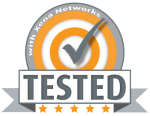 With Xena test modules with 1Gbps SFP test like the Z01t Odin 6-port module equipped with BroadR-Reach 100BASE-T1 and 1000BASE-T1 transceivers the user gets powerful and versatile automotive Ethernet test capabilities up to Layer 3 including RFC 2544 and RFC 2883 to test and verify BroadR-Reach 100BASE-T1 100 Mbit/s and 1000BASE-T1 1000 Mbit/s automotive Ethernet products. Controlling tests with XOA CLI adds repeated testing of the automotive Ethernet products required in development and production.
With Xena test modules with 1Gbps SFP test like the Z01t Odin 6-port module equipped with BroadR-Reach 100BASE-T1 and 1000BASE-T1 transceivers the user gets powerful and versatile automotive Ethernet test capabilities up to Layer 3 including RFC 2544 and RFC 2883 to test and verify BroadR-Reach 100BASE-T1 100 Mbit/s and 1000BASE-T1 1000 Mbit/s automotive Ethernet products. Controlling tests with XOA CLI adds repeated testing of the automotive Ethernet products required in development and production.
Why choose Xena?
Xena offers a full-featured Layer 2-3 stateless traffic generator and analysis platform. It is used to configure and generate Ethernet traffic at all speeds up to 800GE, and analyze how network devices and services, perform in response, making it perfect for most lab-based data-plane test scenarios.
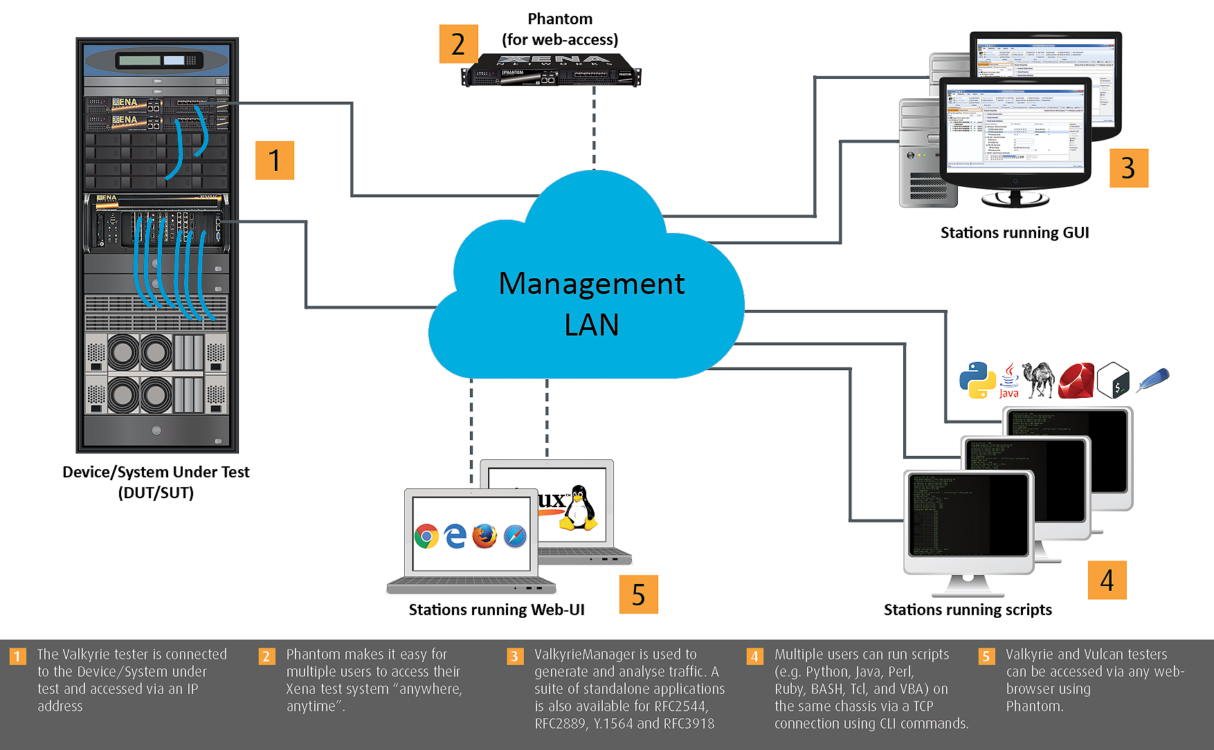
Related Pages
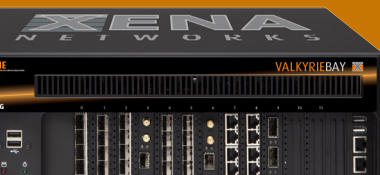
L2-3 Ethernet Testing
XenaBay
12-slot chassis, high port density, low power usage.
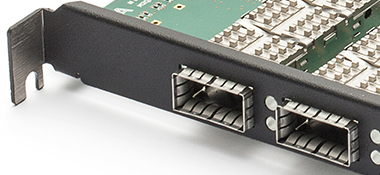
L2-3 Ethernet Testing
Test Modules
Xena test modules all Ethernet speeds to 800GE
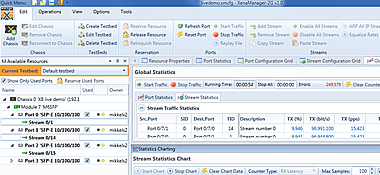
Management
XenaManager
Easy to use!
Powerful software.
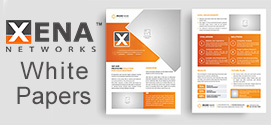
Ethernet Testing
White Papers
A wide variety of white
papers & case studies.

